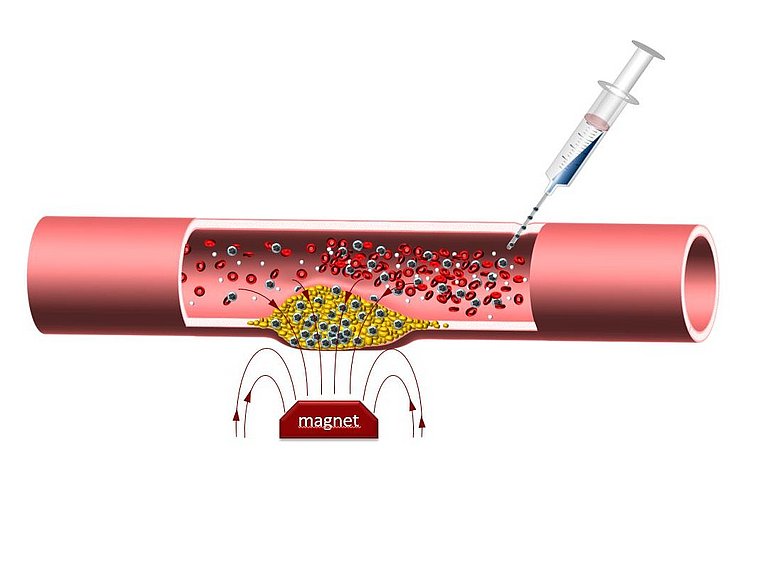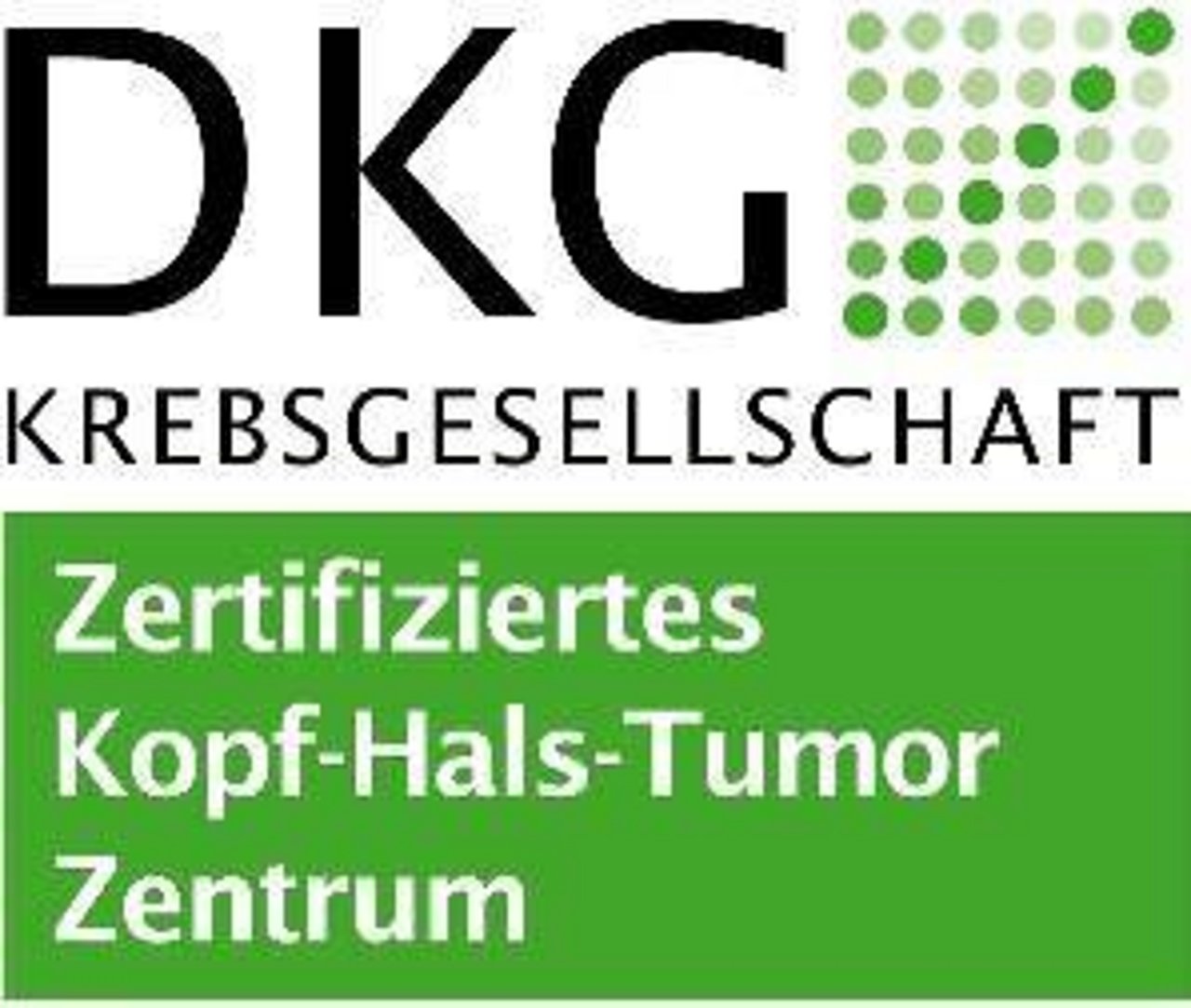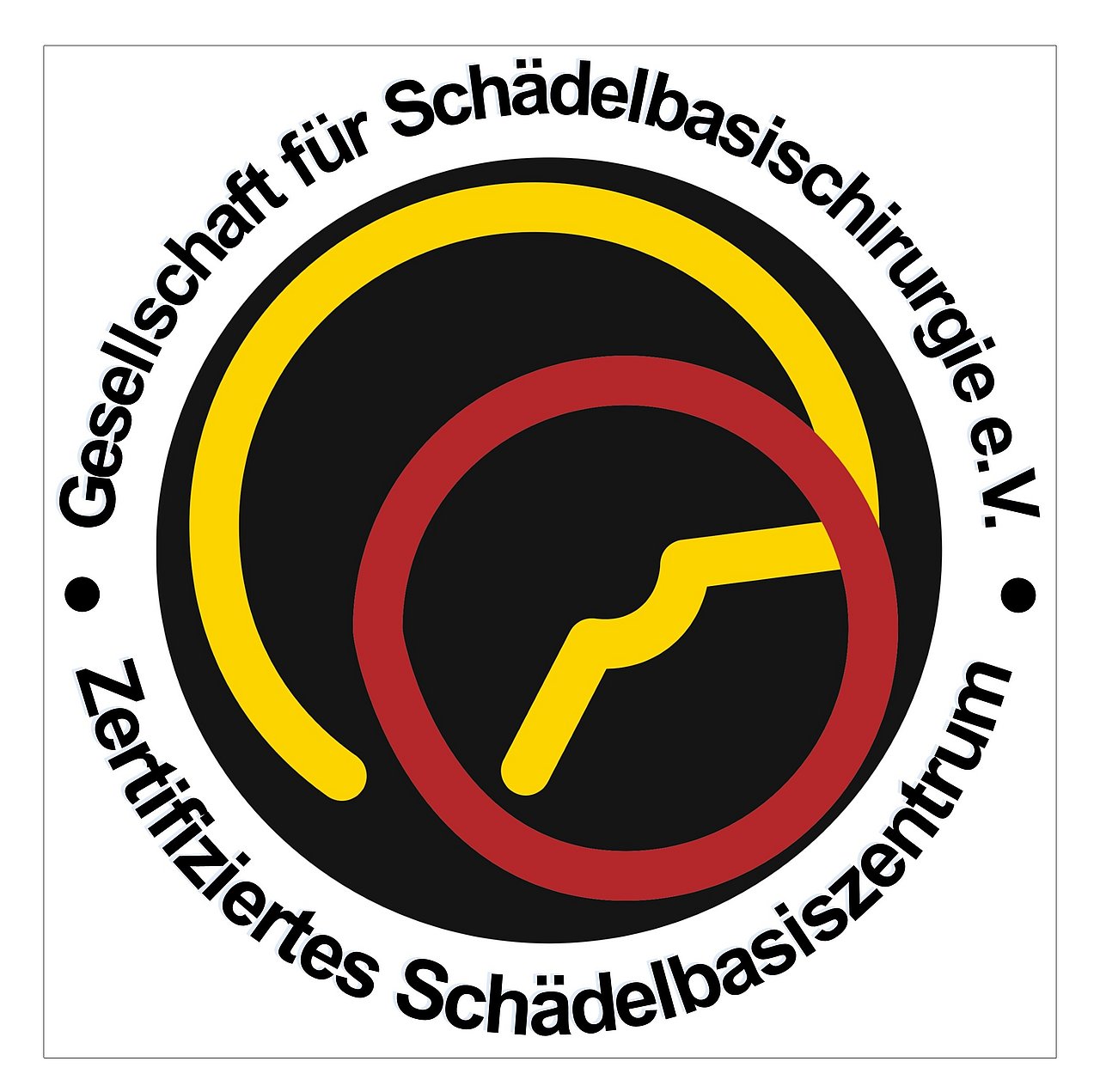SEON's Cardiovascular Nanomedicine group is primarily focused on the diagnosis as well as development of nanomedical treatment options for atherosclerosis. Despite recent advances in imaging techniques, several vulnerable or unstable plaques remain undetected. The use of ultrasmall superparamagnetic iron oxide nanoparticles (SPIONs) to improve available noninvasive techniques is expected to improve the detection of atherosclerotic plaques and reduce the risk of acute cardiovascular events.
Conventional drug therapy is usually administered systemically. This approach has several serious drawbacks, such as side effects and low efficacy within the approved dosage. In our projects, we are trying to overcome these drawbacks, e.g. by targeted delivery of drugs coupled to nanoparticles. This approach promises a local treatment of plaques that is expected to significantly minimize adverse effects by reducing the cytotoxicity of the drug and the required dosage.
Another central theme of our work is vascular regeneration. We investigated the cell compatibility of different hydrogels for 3D vascular printing and the possibility of improving the colonization of polymeric nanofiber scaffolds using magnetic cell seeding. In our new international project, we magnetically seed polyurethane-based scaffolds and commercial polytetrafluoroethylene scaffolds with coatings that improve cell adhesion.
Within SFB/TRR 225 project, we pursue research aiming at biofabrication of pre-endothelialized perfusable microvascular networks based on thermoresponsive polymer technology. Particular focus is placed on the efficacy of colonization and network functionality, as well as biocompatibility of supporting hydrogels (bioinks). In longer perspective, these networks will be adapted for tissue-specific vascularized models.
From the fundamentals of biofabrication towards functional tissue models (SFB/TRR 225)
SFB/Transregio DFG Funding, 2018-2025
Project goal
Within SFB/TRR 225 project, we pursue research aiming at biofabrication of pre-endothelialized perfusable microvascular networks based on thermoresponsive polymer technology. Particular focus is placed on the efficacy of colonization and network functionality, as well as biocompatibility of supporting hydrogels (bioinks). In longer perspective, these networks will be adapted for tissue-specific vascularized models.
Collaboration partners
- Dr. Taufiq Ahmad, UK Würzburg
- Dr. Krystyna Albrecht, UK Würzburg
- Prof. Dr. Andreas Arkudas, UKER
- Prof. Dr. Torsten Blunk, UK Würzburg
- Prof. Dr. Aldo R. Boccaccini, FAU
- Prof. Dr. Anja Bosserhoff, FAU
- Dr. Silvia Budday, FAU
- Prof. Dr. Iwona Cicha, UKER
- Dr. Rainer Detsch, FAU
- Prof. Dr.-Ing. Frank Döpper, Uni Bayreuth
- PD Dr. Regina Ebert, Uni Würzburg
- Prof. Dr. Süleyman Ergün, Uni Würzburg
- Prof. Dr. Ben Fabry, FAU
- Prof. Dr. Stefan Förster, FZ Jülich
- Prof. Dr. Dr. Oliver Friedrich, FAU
- Prof. Dr. Stephan Gekle, Uni Bayreuth
- Prof. Dr. Jürgen Groll, UK Würzburg
- Prof. Dr. Katrin Heinze, Uni Würzburg
- Prof. Dr. Dr. Raymund E. Horch, UKER
- Prof. Dr. Leonid Ionov, Uni Bayreuth
- Dr. Tomasz Jüngst, UK Würzburg
- PD Dr. Annika Kengelbach-Weigand, UKER
- Dr. Gregor Lang, UK Würzburg
- Prof. Dr. Tessa Lühmann, Uni Würzburg
- Prof. Dr. Janina Müller-Deile, UKER
- Prof. Dr. Georg Papastavrou, Uni Bayreuth
- Dr. Sahar Salehi, Uni Bayreuth
- Dr. Natascha Schäfer, UK Würzburg
- Prof. Dr. Thomas Scheibel, Uni Bayreuth
- Prof. Dr. Dirk W. Schubert, FAU
- Prof. Dr. Jürgen Seibel, Uni Würzburg
- Prof. Dr. Reiner Strick, UKER
- Dr. habil. Jörg Teßmar, UK Würzburg
- Prof. Dr. Carmen Villmann, UK Würzburg
- Prof. Dr. Harald Wajant, UK Würzburg
- Prof. Dr. Matthias Weiss, Uni Bayreuth
Nanomedical approach to prevention and treatment of atherosclerosis
DFG Funding, 2018-2020
Project goal
In the field of atherosclerosis, magnetic targeting of SPION-loaded cells on vascular stents to prevent thrombosis and restenosis has shown promise as a preclinical approach. By increasing effective local doses of pharmaceutical agents, magnetic drug targeting may also be a useful tool to improve plaque stability and reduce inflammatory responses. In this project, we are investigating, the effects of blood components on magnetic particle accumulation under blood flow and performing in vivo magnetic drug targeting studies.
Collaboration partners
- Prof. Dr. Tobias Bäuerle, UKER
- Prof. Dr. Margarete Goppelt-Struebe, UKER
- Prof. Dr. Harald Mangge, Uni Graz, Austria
Development of endothelialised small diameter tissue-engineered grafts for cardiovascular surgery
DFG Funding, 2017-2019
Project goal
In this project, the suitability of different scaffolds for tissue engineering is investigated together with novel cell seeding methods to produce tubular grafts for cardiovascular therapy and regeneration. Using different cell seeding techniques and scaffolds, the possibility of stable vascular cell colonization will be tested and the mechanical stability of alginate/protein hybrid hydrogels produced in 2D and 3D forms will be investigated.
Collaboration partners
- Prof. Dr. Aldo R. Boccaccini, FAU
- Dr. Barbara Dietel, UKER
Small diameter vascular prostheses with bioactive coating - analysis of hemocompatibility and endothelial cell response (BioCoatGraft)
DFG Funding, 2018-2020
Project goal
The project includes the clinically urgent development, production and in vitro functional testing of the narrow vascular prostheses based on polyurethanes for CABG. Specifically, the following major tasks are addressed: (1) The fabrication of tubular grafts using clinical polyurethanes, followed by modifications of the surface with bioactive coatings and detailed analysis of the physicochemical properties. (2) The functional verification of the fabricated tubular grafts, with the analysis of hemocompatibility and thrombogenicity under static and dynamic conditions, as well as the study of two different endothelialization processes: magnetic seeding of endothelial cells (EC) onto the luminal surface of the graft compared with perfusion seeding. (3) The detailed microscopic evaluation of the endothelium-covered surface, endothelial secretome, and extracellular matrix production.
Collaboration partners
- Prof. Dr. Hania Hlawaty, INSERM, France
- Prof. Dr. Tomasz Ciach, Warsaw University of Technology, Poland








